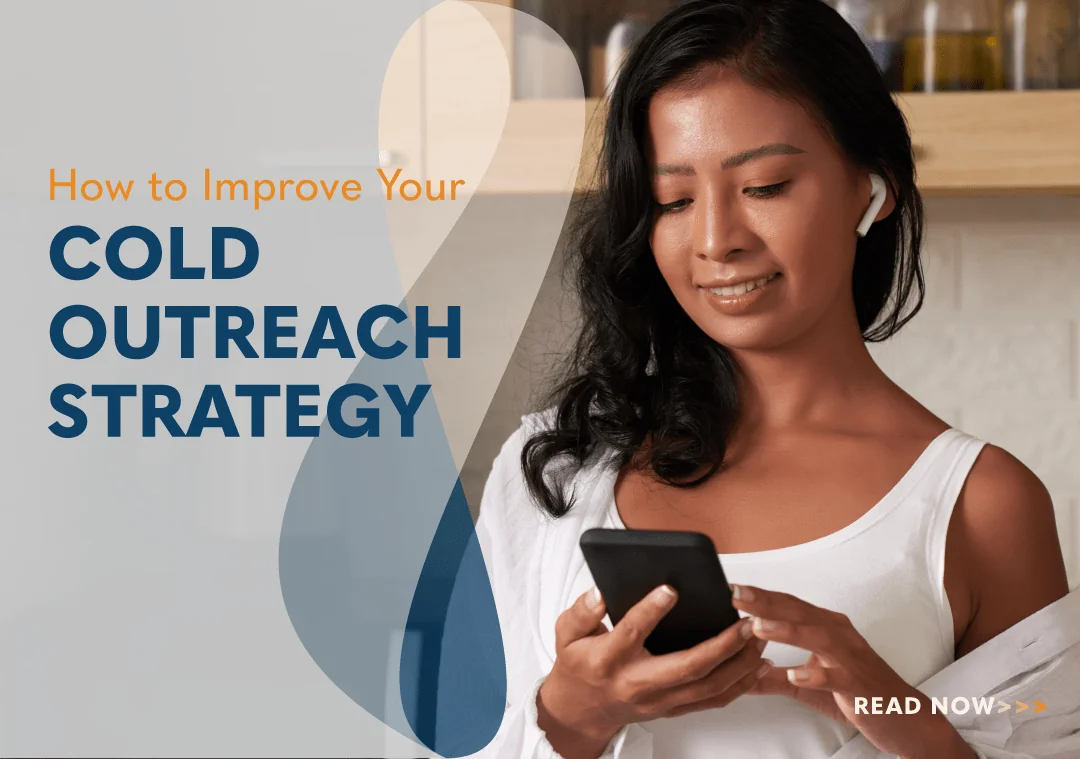How to Improve Your Cold Outreach Strategy

What’s the secret to getting everything you want in sales? Ask. If you don’t ask, you rarely receive. Traditional salespeople see sales as a numbers game and ask everyone and anyone. That’s a lot of asking. Modern sales professionals understand selling is more than a numbers game. They don’t chase every prospect. They only ask the best prospects.
In this article we explore how cold outreach has changed and the best way to approach cold outreach without looking desperate and achieving your desired outcome — more sales.
There was a time when selling was a numbers game. You had to connect with 100 prospects daily to feed your pipeline and make your quota. Today, there are some companies that still play that game. But others have figured out it is better to contact 10 ideal prospects and close 2 than contact hundreds of prospects and close 1.
Modern sellers would rather have the best clients, instead of any client. To win the best clients, you must act differently than you would if you were just trying to get any client.
Commit to What You Sell
The first question you need to ask yourself before reaching out cold to a prospect is, “Why am I contacting this prospect today?” If your answer is to sell them something, then stop right there. That’s an old-school mindset and the best clients will not respond well to that type of sales approach. In fact, that type of thinking is how sales reps get a bad reputation. If you even remotely appear to be self-serving, you will make selling harder than it needs to be.
Cold outreach is hard enough and if we are not 100% committed to our product and company, we are starting each day with a huge obstacle in front of us. This is an obstacle that will derail your sales career before you even get your career started. It’s what makes the phone feel like it weighs 100 pounds.
Why is believing in your product and company so important? For one, prospects can tell when we are passionate about our product and when we aren’t. People can sense when salespeople fake it, even over the phone. That’s the number one rule of cold outreach — be authentic.
Once we develop that belief that our product and company can improve the outcomes for our clients, don’t we then have an obligation to help prospects in need of our solution?
ICP
Next, you will need to know your ideal customer persona (ICP) inside and out. If you know your best client is a leader of operations, has between 50-100 employees, generates more than $10 million and less than $100 million in annual sales, and is privately held, and located in the southwest, why would you spend time reaching out to anyone else?
Now let’s take it a step further. The cold outreach has to be targeted and performed with purpose. That purpose should be in alignment with your ICP’s problem. Maybe you can’t reduce your ICP’s problem down to a single word, but the better you can define the problem, the more effective your cold outreach will be. For example, let’s say you are selling software to dentist offices. You can lead your cold outreach with a question that your software solves for your best clients, like this:
“We are seeing busy dentist offices lose three weeks waiting for payment from patient insurance companies. How are you handling your insurance payments? Are you seeing the same thing?”
To better formulate your questions, ask yourself what you know about your best customers that your prospects likely don’t know. This lack of information is actually hurting them. If you can’t think of questions on your own, reach out to your customers and ask them for feedback. When you have candid conversations with your customers regarding how they are benefiting from using your solution, then you can use their exact words to formulate the question with your ICPs.
The more precisely you outline the ICP and the associated problem, the better your client will realize they are talking with someone that understands their situation. The less specific you are, the less believable you come across in the first 20 seconds.
You will know you’ve done a good job identifying the problem when, more often than not, the prospects agree with you.
Not every prospect will want to solve the problem. Some people might prefer to stay where they are, while others may have just solved the problem with a competitor. But with a strong problem statement, we give ourselves the best chance to move the conversation forward.
Know Appropriate Next Steps
When performing cold outreach, the purpose is typically not to sell the solution on the first call. The purpose is to determine if it makes sense for both you and the prospect to investigate this further. The best way to schedule a second call from a cold outreach is to identify a problem worth solving that resonates with the prospect. Once that is accomplished, the next “ask” is as simple as:
“Do you think it would make sense to schedule a call to investigate this further?”
When you are preparing for your cold outreach, think about the “ask” and the problem you will be solving. No problem, no value. If there’s no value, there won’t be a second conversation. When you have passion for your product, have identified your ICP, and deliver value in excess of the ask, your cold outreach will be exponentially more successful.

- Account Planning (11)
- Awards (50)
- Client Testimonial (37)
- Personal Branding (19)
- Podcast (11)
- Research (68)
- Sales Career Development (85)
- Sales Coaching (154)
- Sales Consulting (133)
- Sales Culture (164)
- Sales Enablement (340)
- Sales Leadership (108)
- Sales Management (242)
- Sales Negotiation (16)
- Sales Prospecting (124)
- Sales Role-Playing (18)
- Sales Training (229)
- Selling Strategies (255)
- Soft Skills (67)
- Talent Management (92)
- Trusted Advisor (27)
- Virtual Selling (41)
- Webinar (10)





























